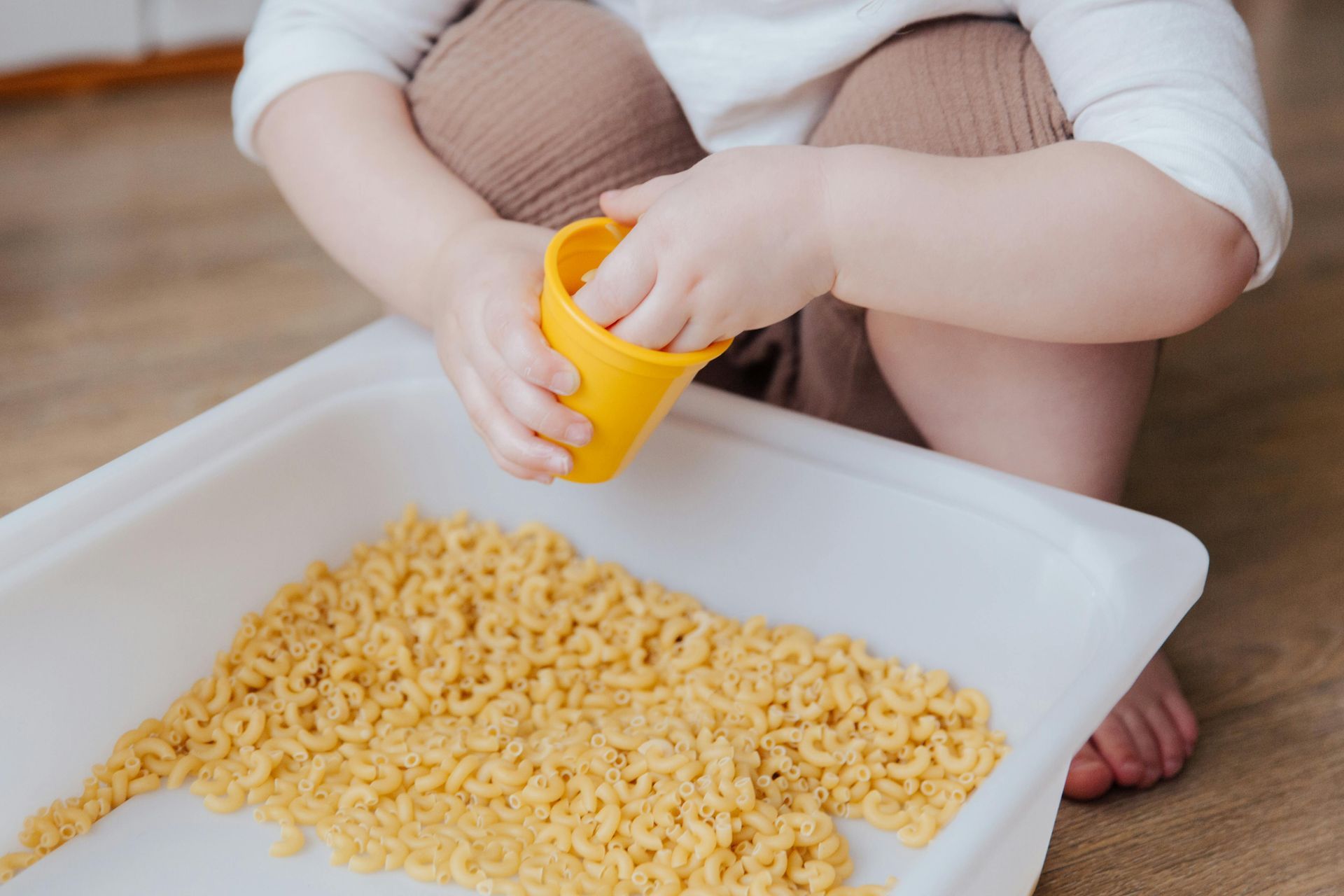Embarking on the Sensory Tactile Adventure
Why Sensory Play Is Important for Feeding
Hey there, wonderful parents! Today, let's dive deep into the magical world of sensory tactile play and discover why it's a game-changer for your child's feeding skills. We all know the importance of turning mealtimes into joyful experiences, and sensory play is like the superhero cape your kiddo needs for this mission.
Texture Familiarity:
Picture this: your little explorer, hands covered in paint or playdough, squishing and feeling different textures during playtime. It's not just about messy fun; it's about creating a foundation for a more adventurous eater. By getting hands-on with various sensations, your child becomes buddies with textures, making them more open to trying new foods. Familiarity is the secret sauce here! Imagine them giggling as they touch soft fabrics, explore bumpy surfaces, or feel the smoothness of various materials. These playful encounters aren't just creating a mess; they're building a positive relationship between your child and different textures.
Fine Motor Development:
Now, let's talk about those tiny hands working their magic. Sensory play often involves picking up small objects, manipulating different textures, and coordinating hand movements. These activities are like mini workouts for their fingers and hands, turning them into superheroes at mealtime. As your child engages in activities like picking up tiny beads, squeezing a stress ball, or handling textured toys, they're not just having fun – they're enhancing their fine motor skills. These skills, honed during playtime, seamlessly transfer to the dinner table, empowering your little one to handle utensils, pick up food, and become a self-feeding champion.
Sensory Integration:
Kids are like little scientists exploring the world through their senses. Sensory tactile play is their sensory playground, helping them make sense of different sensations. Imagine less fussiness at the dinner table because your little one is already a sensory pro. Through activities that engage their sense of touch, smell, and even taste, your child learns to process and interpret sensory information. It's like preparing them for a sensory feast at every meal, making the dining experience more comfortable and enjoyable.
Positive Mealtime Associations:
We all want to create happy memories around meals, right? Sensory play is the architect of these positive vibes. Those enjoyable moments spent exploring textures and discovering new sensations translate into happier mealtimes. As your child associates joy and curiosity with mealtime, the dining table becomes a place of connection and exploration. They're more likely to see food as a friend, not a foe, fostering a positive attitude towards trying new dishes and embracing a variety of flavors.
In a nutshell, sensory tactile play isn't just play – it's a guided adventure preparing your child for smoother mealtimes. So, embrace the mess, let those little fingers explore, and watch your child's feeding skills flourish with joy and curiosity!












